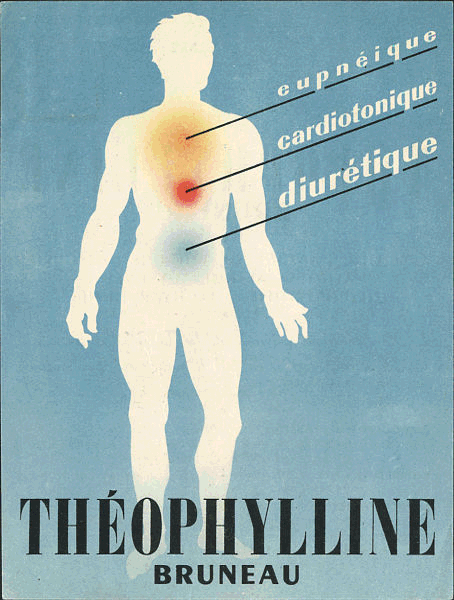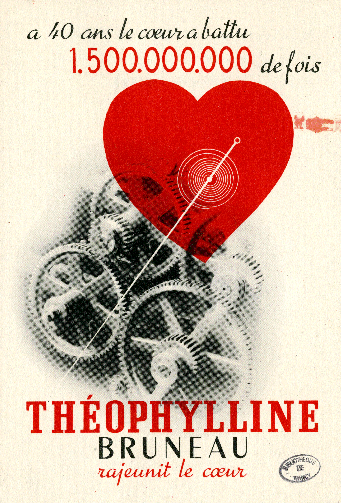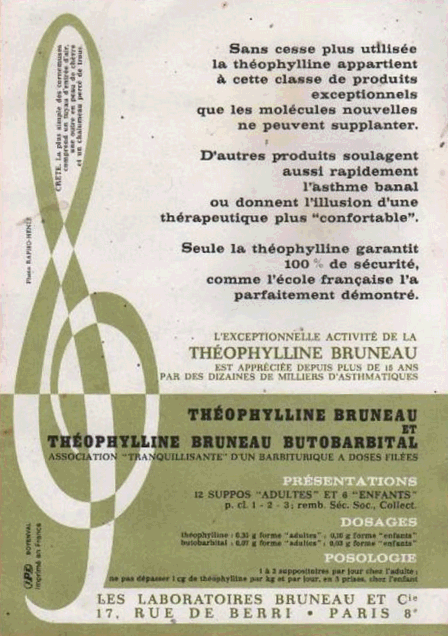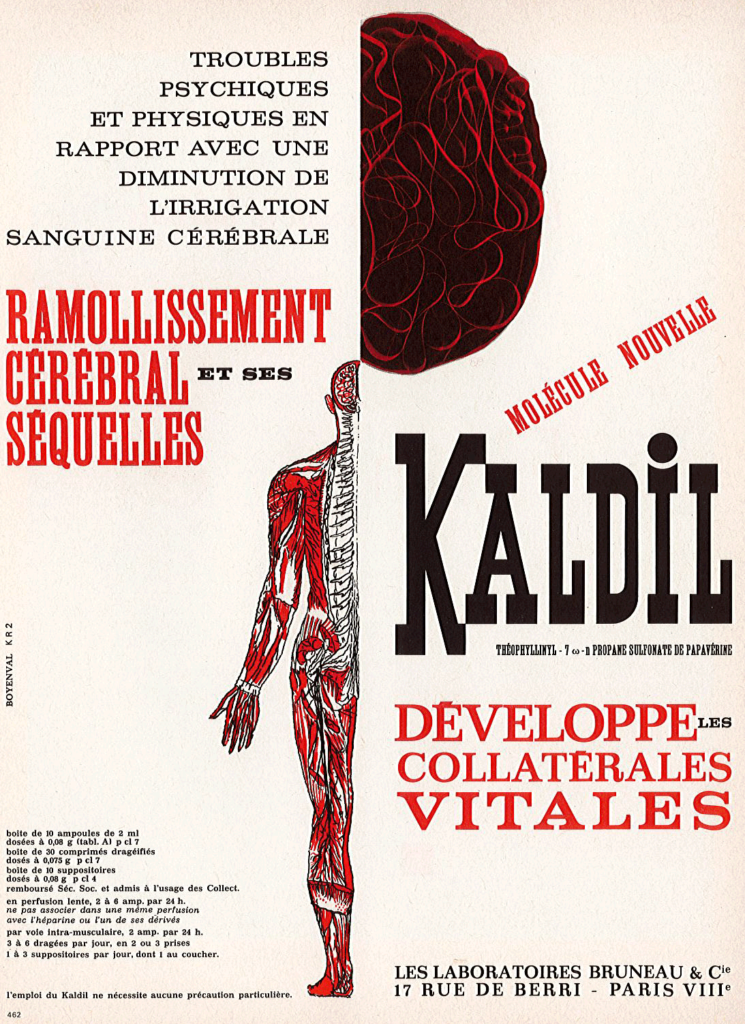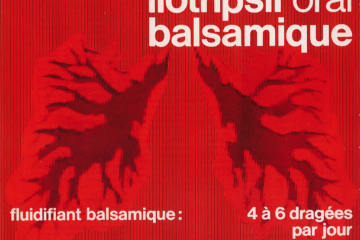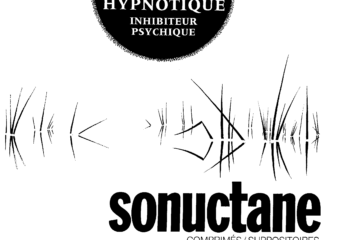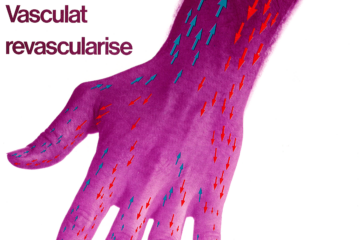The drug Kaldil® has been used to treat physical and mental disorders associated with a defective brain blood supply. The advert mentioned the utility of the drug to treat a softening of the brain and associated consequences. The drug was available as ampules (injectable liquid product), coated tablets and suppositories. The active principle, a new molecule as that time, was a papaverine and a theophylline derivative acting as a vasodilatator. Papaverine is a well-known benzylisoquinoline alkaloid, extracted from the plant Papaver somniferum L., with anxiolytic effect. Theophylline is a non-selective cAMP phosphodiesterase (PDE) inhibitor with smooth muscle relaxant activity. The new active ingredient (theophyllinyl 7-ω-n propane sulfonate of papaverine) efficiently inhibited cyclic AMP phosphodiesterase. As such it was used in rehabilitation and functional readaptation.
The Bruneau laboratory was well-known for the development of theophylline in the 1960s, a classic bronchodilatator largely used to treat asthma, and still in use today. The laboratory published various illustrations of the benefit of theophylline and a nice representation of the activity of Kaldil.
